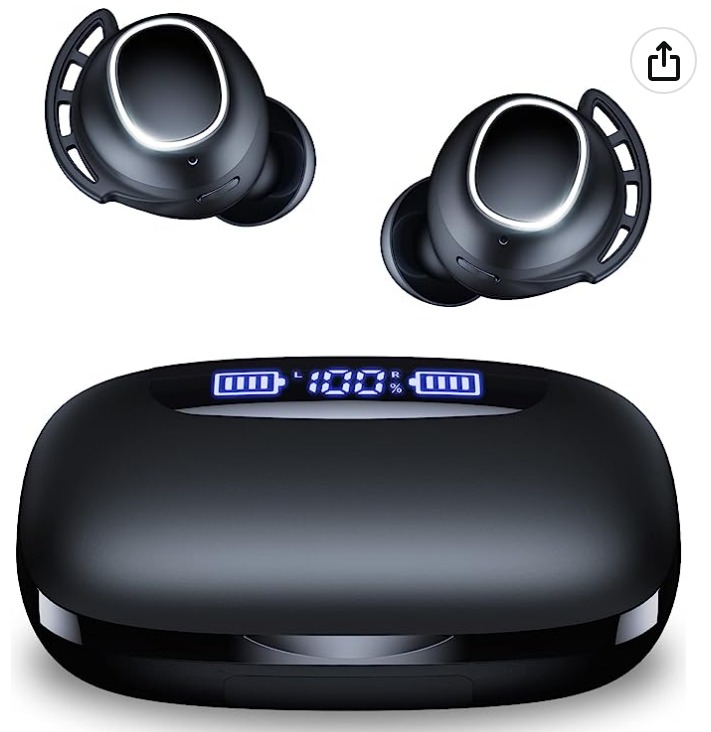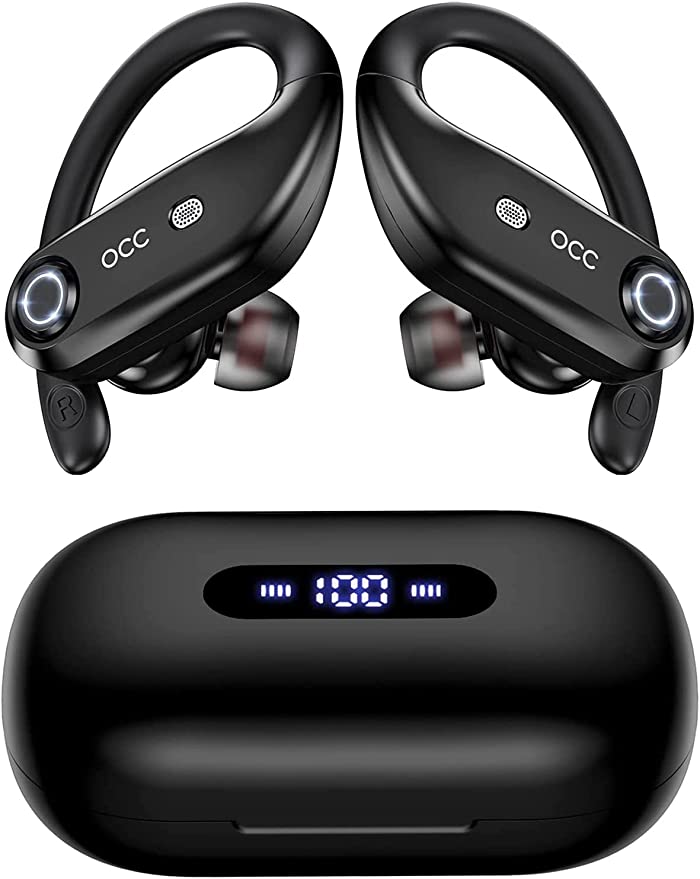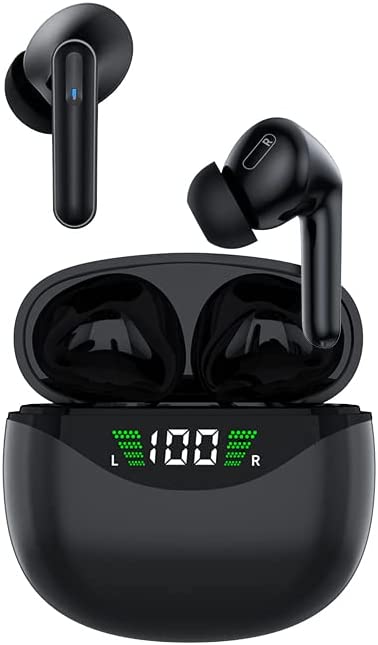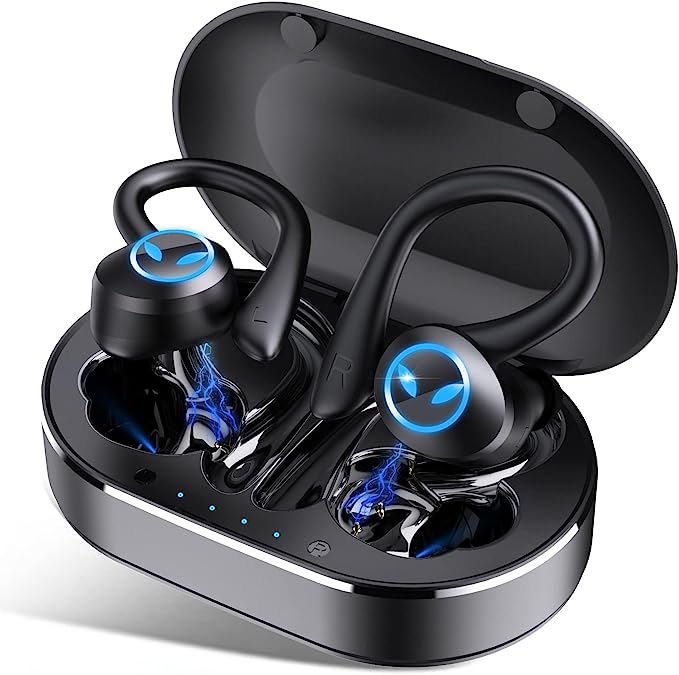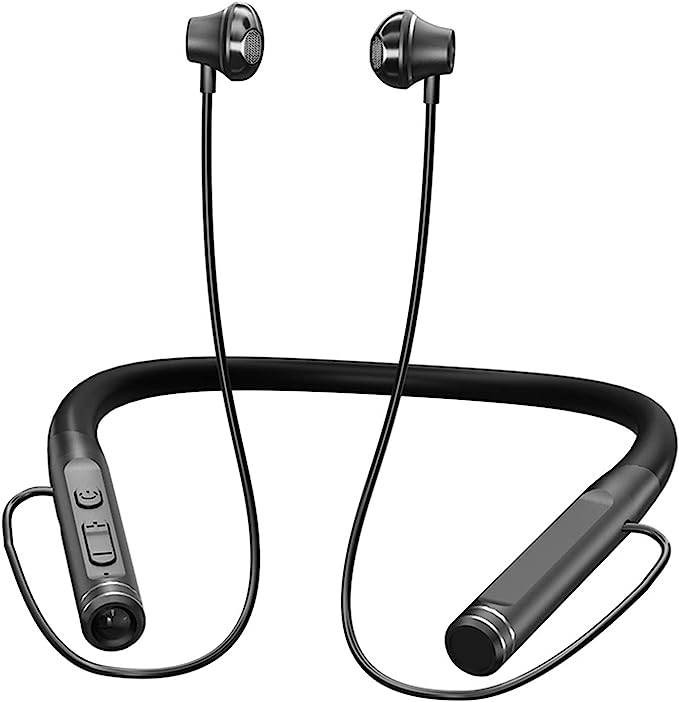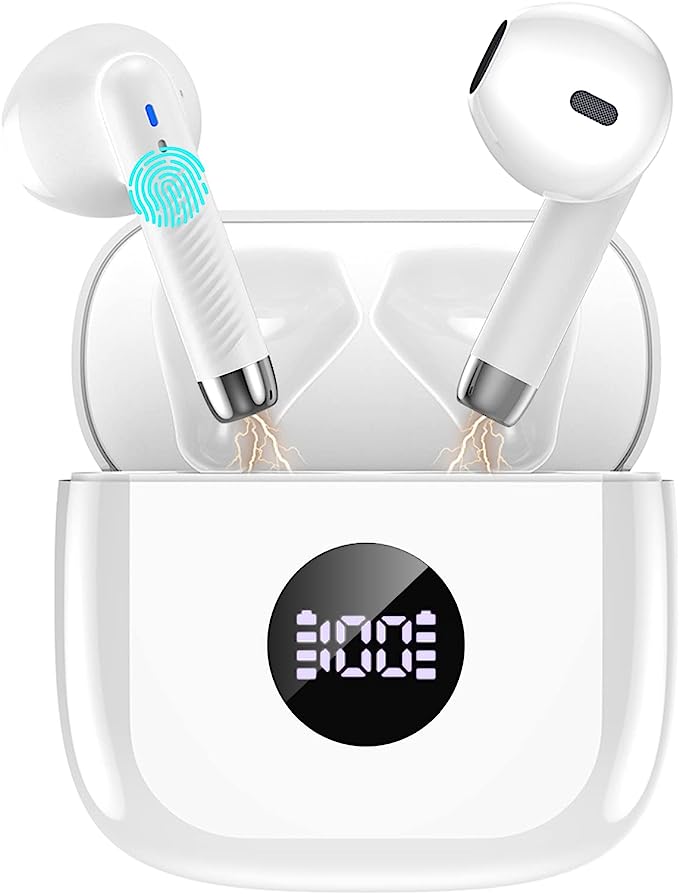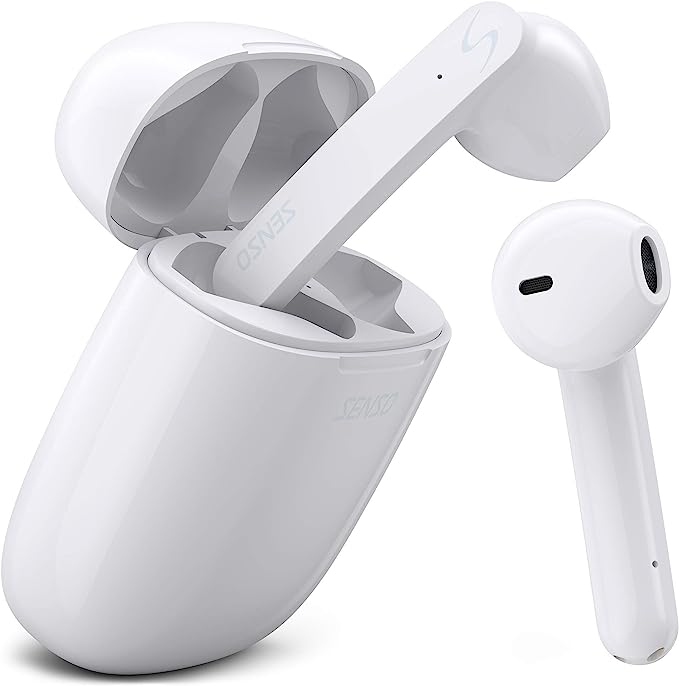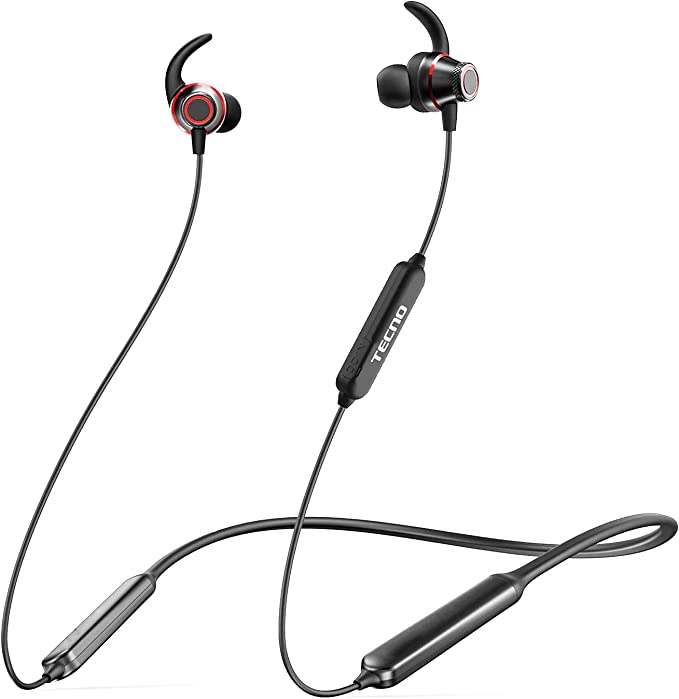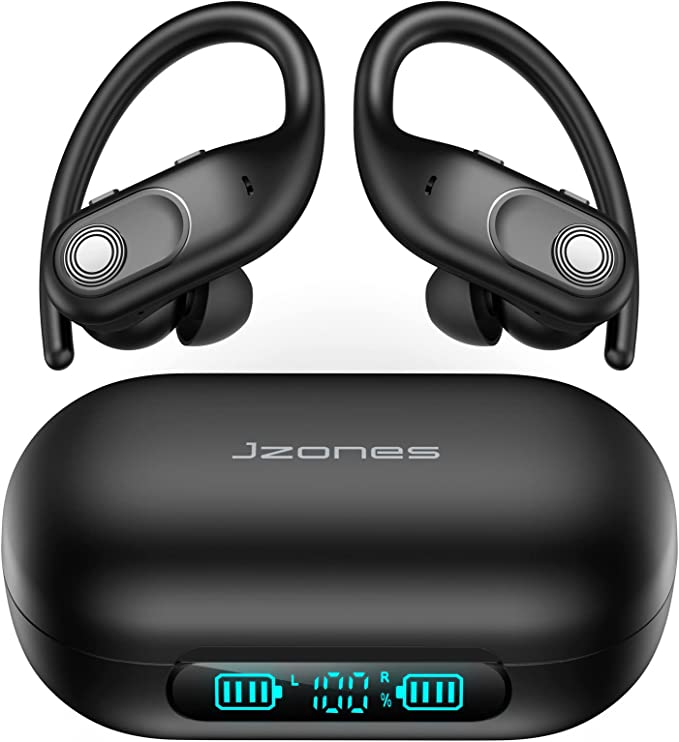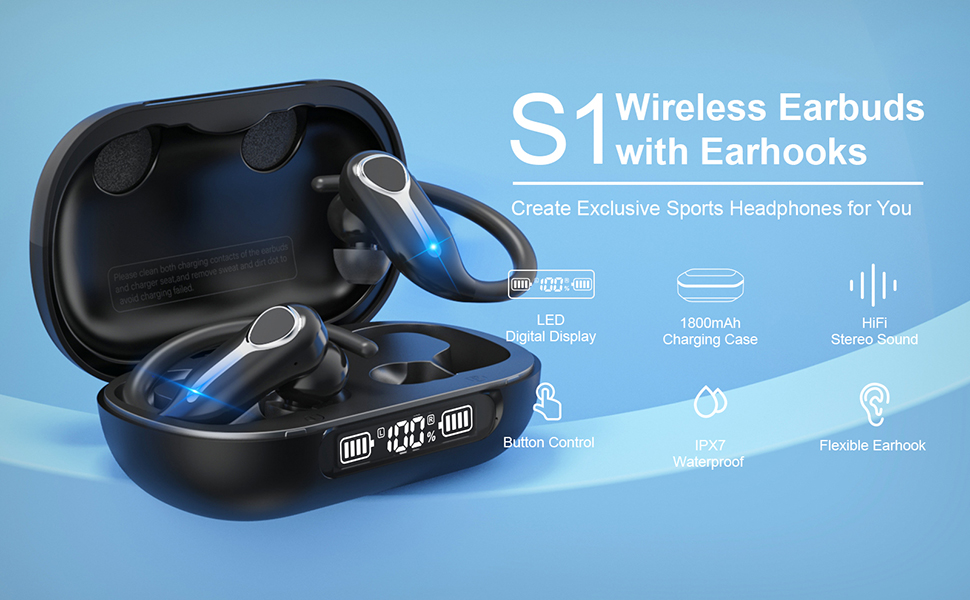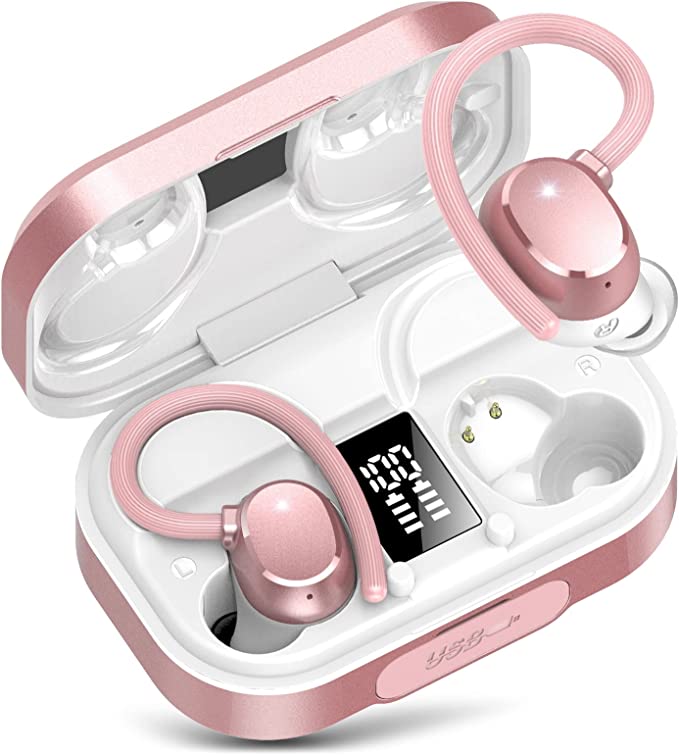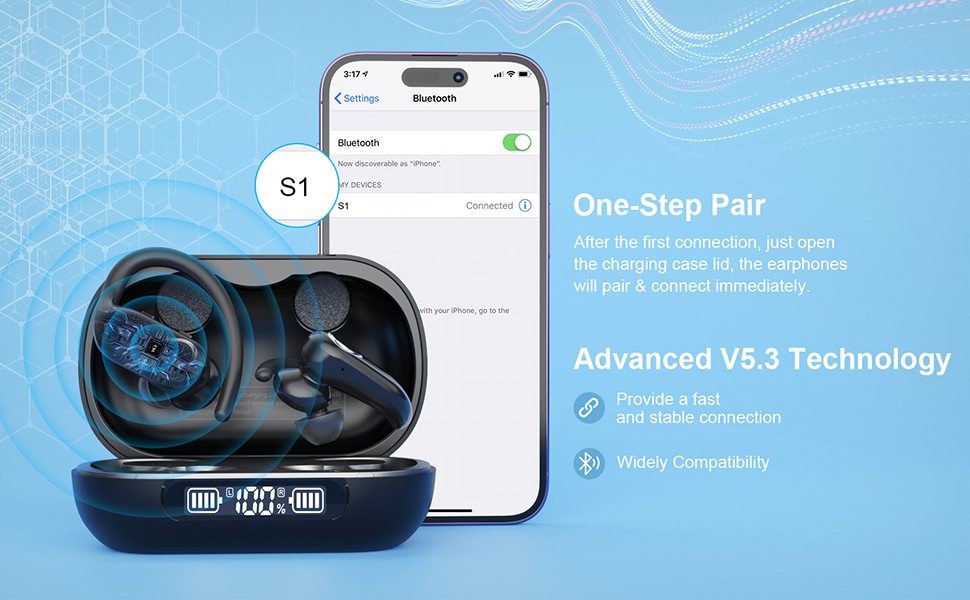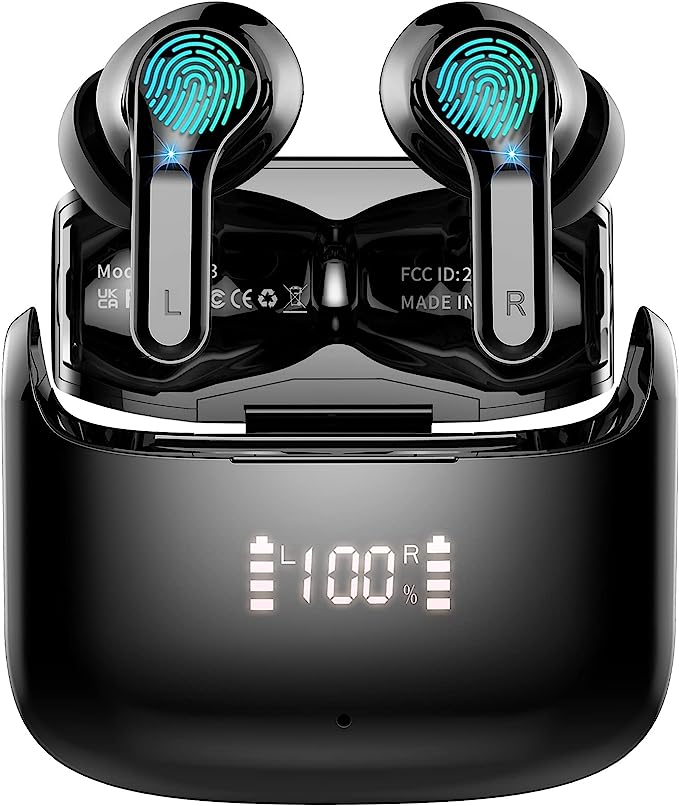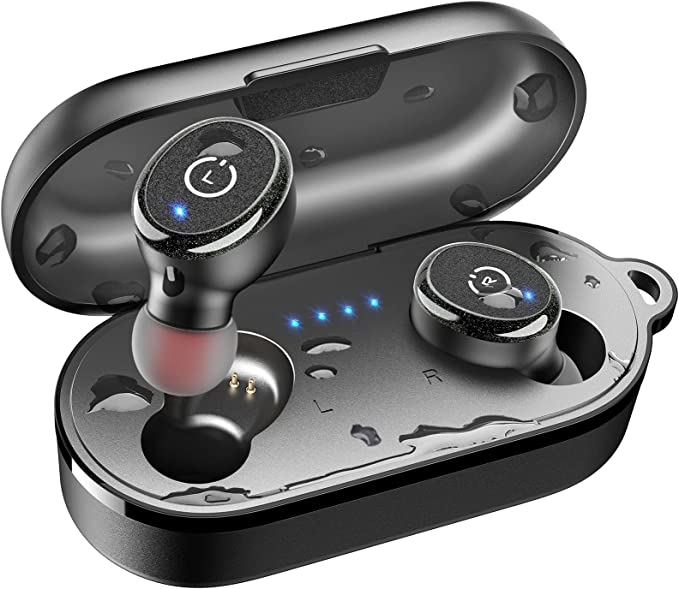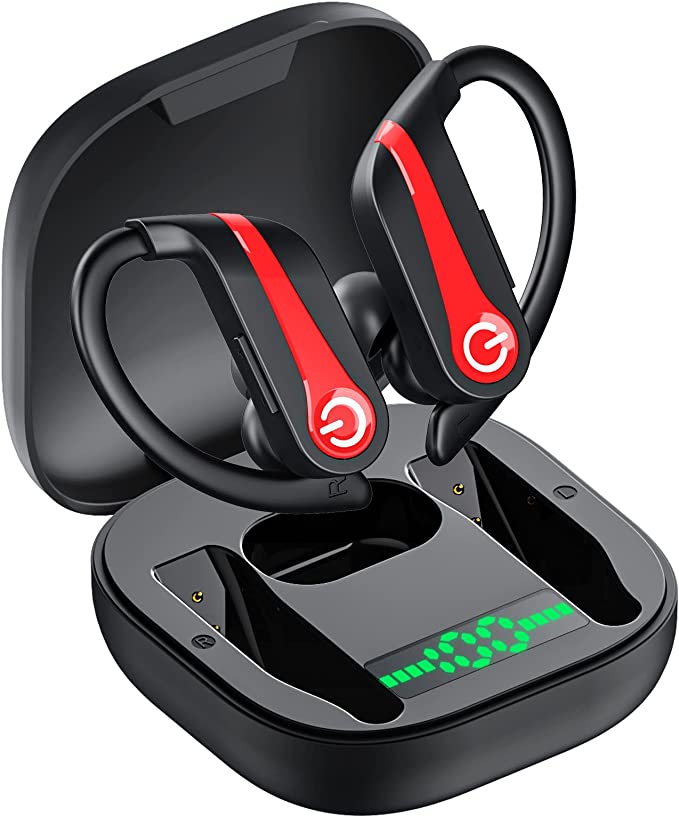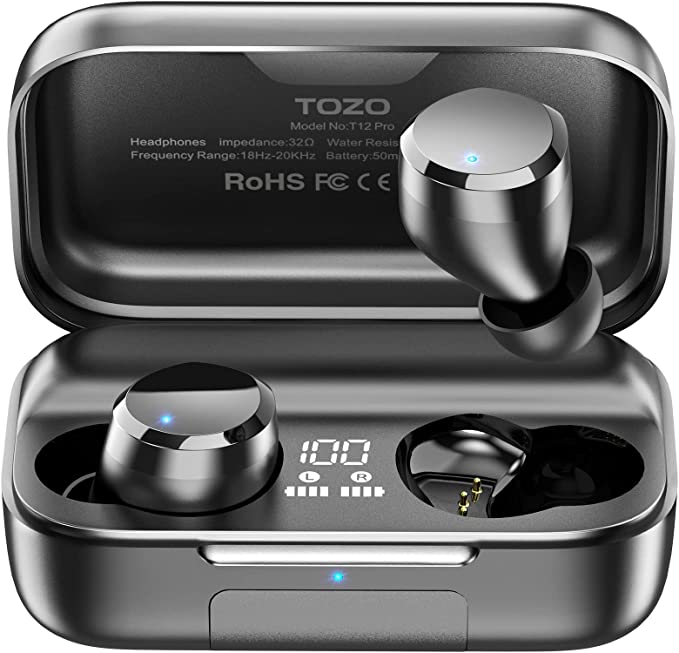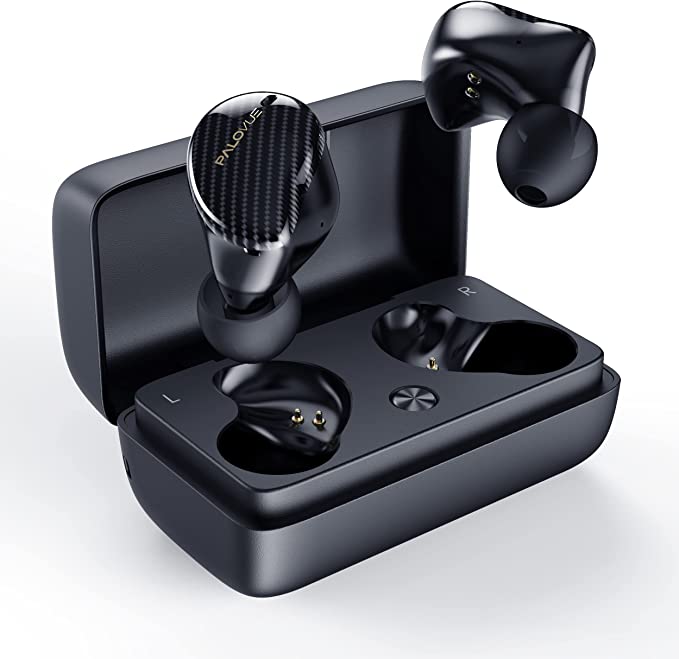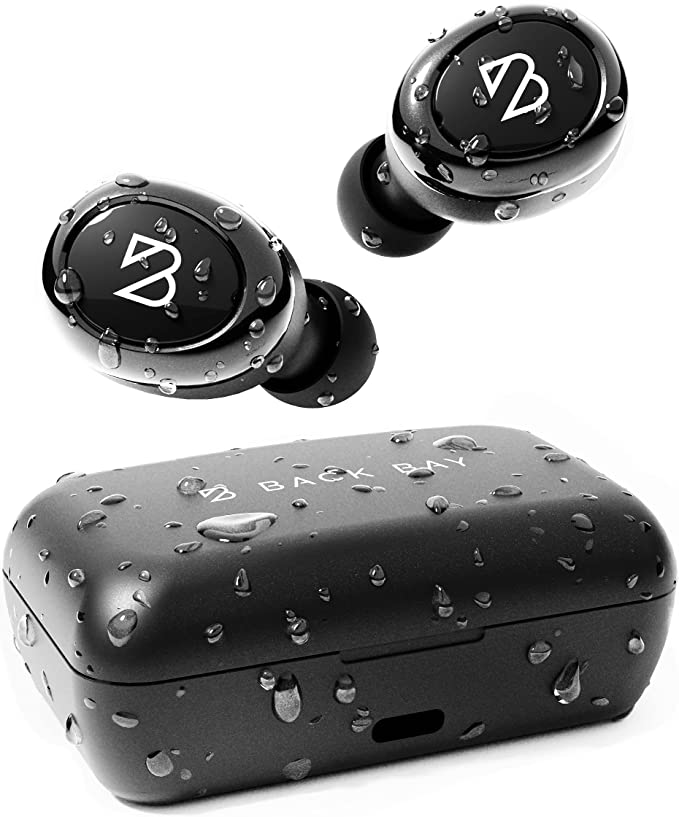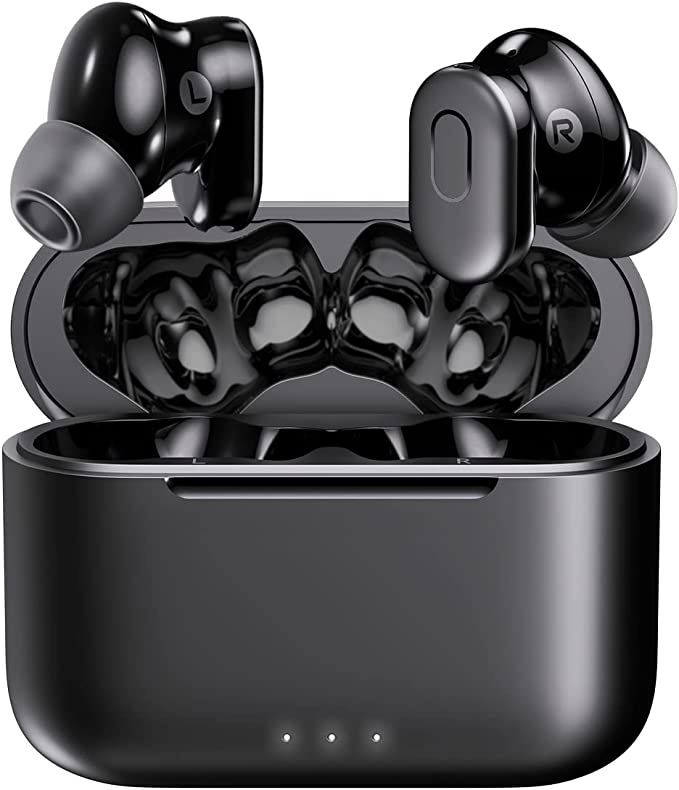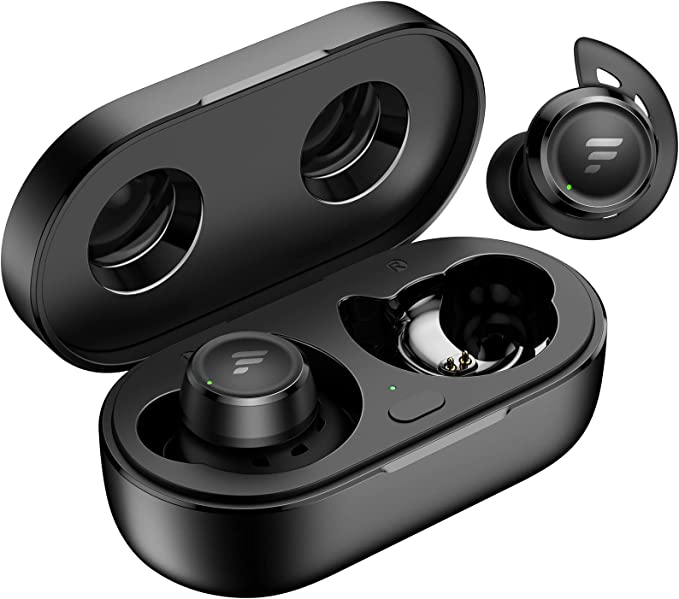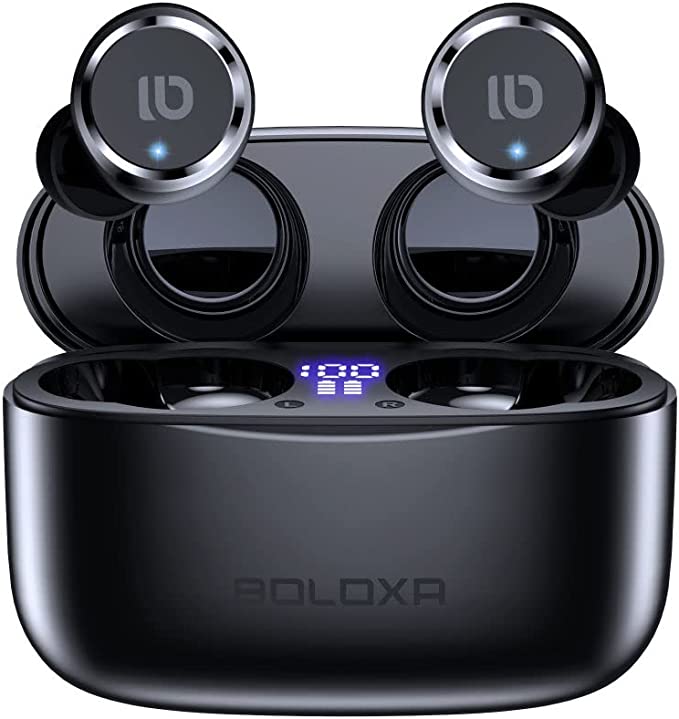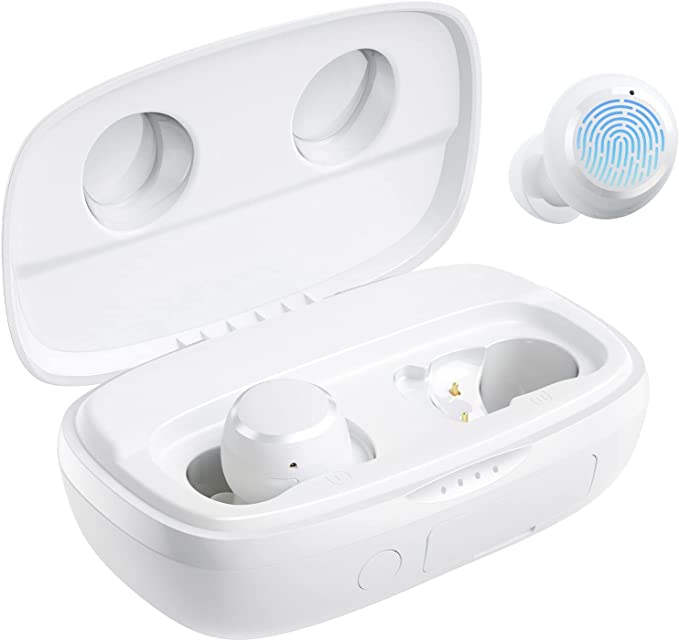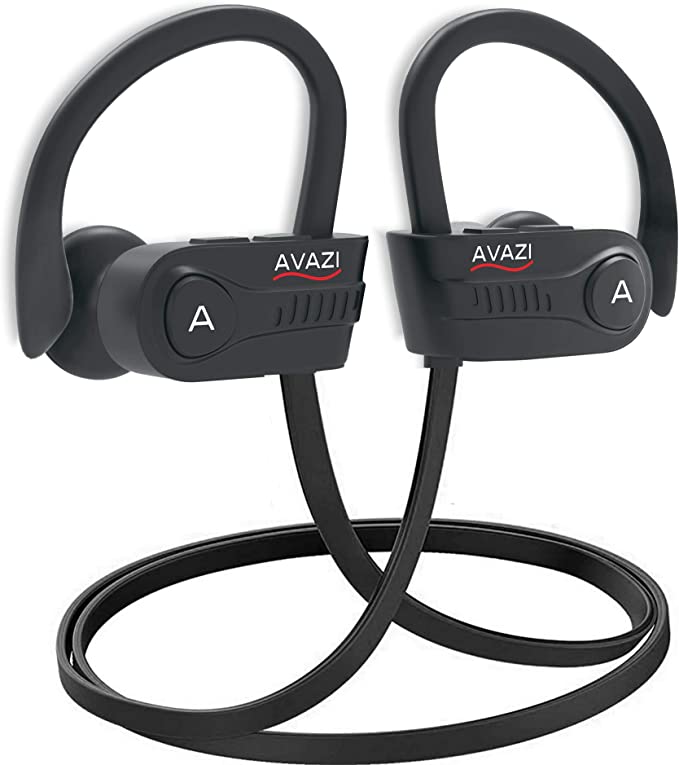WERDEDE 001 Wireless Earbuds: 180H Playtime & Crystal-Clear Sound
Update on Feb. 22, 2025, 7:30 a.m.
Wireless earbuds have rapidly become ubiquitous. We see them everywhere – on the morning commute, at the gym, in coffee shops. They’ve liberated us from the tyranny of tangled wires, offering a seamless way to enjoy music, podcasts, and calls. But with this freedom comes a new set of considerations: battery life, sound quality, connectivity, and durability. Let’s explore these factors through the lens of the WERDEDE 001 wireless earbuds, delving into the technology that makes them tick.

The Promise of Extended Listening
The WERDEDE 001 boasts an impressive 180 hours of total playtime. This immediately addresses a major concern for many wireless earbud users: battery anxiety. That nagging feeling that your earbuds might die in the middle of a workout, a crucial call, or your favorite song. But how is this extended playtime achieved?

Deep Dive: The Power Within
The secret lies in the charging case. Think of it as a portable power bank specifically designed for your earbuds. The case itself contains a significantly larger battery than the earbuds. When you place the earbuds back into their snug compartments, they automatically begin to recharge, drawing power from the case’s internal battery.
This is possible due to the use of lithium-ion batteries, the same technology that powers our smartphones and laptops. Lithium-ion batteries are favored for their high energy density – meaning they can store a lot of power in a relatively small space – and their ability to be recharged hundreds of times. While we don’t have the exact mAh (milliampere-hour) rating of the WERDEDE 001’s charging case, it’s clear that it’s substantial enough to recharge the earbuds multiple times. The earbuds themselves likely have a smaller lithium-ion battery, providing several hours of playtime on a single charge. It’s important to note that the 180-hour figure represents the combined playtime of the earbuds and the multiple recharges provided by the case. The earbuds themselves will not last 180 hours on a single charge. The LED display on the case is your window into the remaining power, eliminating guesswork and keeping you informed.

Bluetooth 5.1: The Unsung Hero of Wireless Audio
The WERDEDE 001 utilizes Bluetooth 5.1, the latest iteration of this ubiquitous wireless technology. But what does that mean for you, the listener? Bluetooth, in essence, is a way for devices to communicate wirelessly over short distances using radio waves. It operates in the 2.4 GHz frequency band, a globally unlicensed portion of the radio spectrum.
Bluetooth 5.1 offers several key advantages over its predecessors:
- Increased Speed: Data transfer speeds are significantly faster, which is particularly beneficial for high-quality audio streaming and reducing latency (the delay between the audio source and your ears). This is crucial for video calls and gaming, where even small delays can be disruptive.
- Enhanced Stability: The connection between your earbuds and your phone or other device is more robust and less prone to dropouts. This is achieved through improved connection management and error correction.
- Extended Range: While the typical Bluetooth range is around 33 feet (10 meters), Bluetooth 5.1 can, under ideal conditions, extend that range considerably. This gives you more freedom to move around without losing your connection.
- Lower Power Consumption: Bluetooth 5.1 is more energy-efficient, contributing to the extended battery life of the earbuds. This is achieved through optimized power management and more efficient data transmission.
Bluetooth’s evolution is a fascinating story in itself. From its inception in the late 1990s, it has undergone continuous refinement, driven by the demand for faster, more reliable, and more power-efficient wireless communication. The WERDEDE 001, with its Bluetooth 5.1 capabilities, represents a significant step forward in this ongoing technological journey.
Crystal-Clear Calls in a Noisy World: CVC 8.0 Explained
In today’s world, our earbuds often serve as our primary communication devices. We take calls on the go, participate in virtual meetings, and use voice assistants. That’s where CVC 8.0 noise cancellation comes in. CVC, or Clear Voice Capture, is a technology developed by Qualcomm to enhance voice clarity during calls.
It’s important to distinguish CVC from Active Noise Cancellation (ANC). ANC is primarily designed to reduce ambient noise for the listener, creating a quieter environment for music or other audio. CVC, on the other hand, focuses on reducing background noise for the person on the other end of the call.
CVC 8.0 uses a combination of sophisticated digital signal processing (DSP) algorithms and, often, multiple microphones (MEMS microphones). Here’s a simplified breakdown of how it works:
- Microphone Input: The earbuds’ microphones pick up both your voice and the surrounding noise.
- Signal Analysis: The DSP algorithms analyze the incoming audio signals, identifying and differentiating between different sound sources (your voice vs. background noise). This is done by analyzing various characteristics of the sound waves, such as their frequency, amplitude, and timing.
- Noise Suppression: The algorithms then selectively suppress the identified background noise while preserving and enhancing your voice.
- Output: The processed audio signal, with reduced noise, is transmitted to the person on the other end of the call.
The result is a clearer, more intelligible voice signal, even in noisy environments like busy streets, crowded cafes, or windy conditions. While CVC 8.0 primarily targets voice calls, it can also improve the performance of voice assistants, making it easier for them to understand your commands in noisy situations.

Weathering the Storm (and the Sweat): IPX7 Waterproofing
The WERDEDE 001 earbuds boast an IPX7 waterproof rating. But what does that cryptic code actually mean? IP (Ingress Protection) ratings are an international standard that defines the level of protection a device offers against intrusion from solids (like dust) and liquids (like water).
The “X” in IPX7 indicates that the device hasn’t been formally tested for dust protection. The “7” refers to the level of water protection. Specifically, an IPX7 rating means the earbuds can withstand immersion in water up to 1 meter (about 3.3 feet) deep for up to 30 minutes.
This level of waterproofing provides significant peace of mind for active users. You can wear the WERDEDE 001 during intense workouts without worrying about sweat damage. You can even wear them in the rain. While they’re not designed for swimming (which requires a higher IPX8 rating), they can certainly handle accidental splashes or even a brief submersion.
Fingertip Control: Navigating Your Audio World
The WERDEDE 001 earbuds feature touch controls, eliminating the need for physical buttons. This offers several advantages:
- Sleek Design: Touch controls contribute to a cleaner, more minimalist aesthetic.
- Waterproof Integrity: Fewer physical openings mean better protection against water and dust.
- Ease of Use: Simple taps and holds are often more intuitive than fumbling with small buttons.
The specific touch controls are as follows:
- Single Tap: Play/pause music, answer/end calls.
- Double Tap: Skip to the next track (right earbud) or previous track (left earbud).
- Triple Tap: Activate voice assistant (Siri or Google Assistant).
- Long Press: Adjust volume (right earbud to increase, left earbud to decrease).
These touch controls rely on capacitive sensors, similar to the technology used in smartphone touchscreens. These sensors detect the change in capacitance caused by your finger’s touch, triggering the corresponding action.
Designed for Comfort and Stability
Comfort is paramount, especially for earbuds that you might wear for extended periods. The WERDEDE 001 earbuds are designed with ergonomics in mind. While we don’t have detailed specifications on their exact shape and dimensions, we know they feature soft silicone eartips. These eartips provide a secure and comfortable seal within the ear canal, which is crucial for several reasons:
- Secure Fit: A good seal prevents the earbuds from falling out, even during vigorous activity.
- Noise Isolation: A proper seal passively blocks out external noise, enhancing the listening experience. This is passive noise isolation, distinct from active noise cancellation.
- Sound Quality: A good seal ensures that the sound produced by the earbuds is delivered directly to your ear canal, minimizing sound leakage and maximizing bass response.
The choice of silicone for the eartips is also significant. Silicone is a soft, flexible, and hypoallergenic material that conforms to the shape of the ear canal, providing a comfortable and secure fit for most users.
Sound Quality: A Deeper Dive
While we lack detailed specifications like frequency response graphs or driver size, we can discuss some general principles of sound quality in earbuds.
The sound you hear from earbuds is produced by tiny speakers called drivers. These drivers convert electrical signals into sound waves. The size and quality of the drivers significantly impact the sound quality. Larger drivers can generally produce more powerful bass, while smaller drivers may struggle to reproduce low frequencies effectively.
Frequency response refers to the range of frequencies (from low bass to high treble) that the earbuds can reproduce. A wider frequency response generally indicates better sound quality, as the earbuds can reproduce a more complete range of sounds.
Audio codecs also play a crucial role. Codecs are algorithms that compress and decompress audio data for wireless transmission over Bluetooth. Different codecs have different levels of compression and, consequently, different sound quality. Common codecs include SBC (the standard Bluetooth codec), AAC (popular with Apple devices), and aptX (which offers higher fidelity). We don’t know which codecs the WERDEDE 001 supports, but this is an important factor in determining its overall sound quality.
Potential Limitations
It’s important to acknowledge some potential limitations of the WERDEDE 001, based on the available information and user reviews. The most notable absence is Active Noise Cancellation (ANC). While CVC 8.0 enhances call quality, it doesn’t actively block out ambient noise for the listener. For users who frequently find themselves in very noisy environments (like on a busy airplane or train), the lack of ANC might be a drawback. ANC uses microphones to detect external noise and then generates an opposing sound wave that cancels it out, creating a quieter listening environment.
Furthermore, the customer reviews, while generally positive, are mixed, averaging 3.8 out of 5 stars. This suggests that some users may have experienced issues with reliability, sound quality, or connectivity. It’s crucial to approach any product with a critical eye and consider both the advertised features and the real-world experiences of other users. Without more specific information about the nature of the complaints, it’s difficult to pinpoint the exact causes, but it’s a factor worth considering. The relatively low price point of the WERDEDE 001 might also suggest that some compromises were made in terms of components or manufacturing quality compared to premium earbuds.

The Future of Sound
The world of wireless audio is constantly evolving. We can expect to see several key trends in the coming years:
- Even Longer Battery Life: Advancements in battery technology and power management will continue to push the boundaries of playtime. We might see earbuds with even smaller, more energy-efficient batteries, or charging cases with even larger capacities.
- Smarter Noise Cancellation: ANC technology will likely become more sophisticated, using AI and machine learning to adapt to different noise environments and personalize the listening experience.
- Higher-Resolution Audio: New Bluetooth codecs and higher bandwidth capabilities will enable the transmission of even higher-quality audio, approaching or even exceeding CD-quality sound.
- Spatial Audio: This technology creates a more immersive, three-dimensional soundstage, making it feel like you’re surrounded by the music.
- Integration with Health and Fitness Tracking: Earbuds might incorporate sensors to monitor heart rate, body temperature, or other health metrics.
- Sustainable Design: Manufacturers are increasingly focusing on using eco-friendly materials and reducing the environmental impact of electronic devices.
The WERDEDE 001, while a budget-friendly option today, provides a glimpse into the core technologies that are shaping the future of wireless audio. It showcases the importance of long battery life, reliable connectivity, effective noise management (even without full ANC), and water resistance – features that are becoming increasingly essential for modern listeners. As technology continues to advance, we can anticipate even more impressive and feature-rich wireless audio experiences in the years to come. The journey from bulky, wired headphones to the tiny, powerful wireless earbuds we use today is a testament to human ingenuity and our constant quest for a more seamless and immersive way to experience sound. And that journey is far from over.
Conclusion:
The WERDEDE 001 wireless earbuds are a compelling example of how far wireless audio technology has come. They package a remarkable array of features – extended playtime, Bluetooth 5.1, CVC 8.0 noise cancellation, and IPX7 waterproofing – into an affordable and user-friendly design. While they may not offer the absolute pinnacle of audio fidelity or the advanced noise cancellation of premium models, they provide a solid and versatile listening experience for everyday use. They represent a significant step up from the tangled wires and limited battery life of the past, offering a taste of the freedom and convenience that wireless audio technology can provide. By understanding the underlying principles of Bluetooth, noise cancellation, and battery technology, we can appreciate the engineering that goes into even seemingly simple devices like these earbuds, and gain a greater appreciation for the ever-evolving world of sound.

